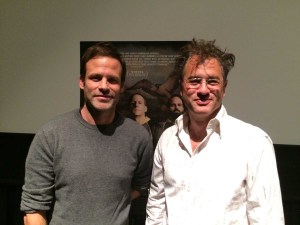
In their exploration of the characters and their deepest motivations, the editors of Foxcatcher kept adjusting the emotions of scenes based on changes that they made to other portions of the film.
“In the filmmaking we were trying to be emotionally honest and transparent,” said editor Stuart Levy, of his first collaboration with director Bennett Miller. “Often, if a change was made to a scene, it would affect, in subtle ways, other scenes in the movie.”
“We call it the ripple effect,” commented editor Conor O’Neill, who clicked with Miller when he came on as additional editor to cut the baseball scenes on the director’s Moneyball. “You can’t just change something in a vacuum. Even when you are working on one scene, you’ve always got to back up and watch a lot of the movie leading up to it to understand what your changes have done to the big picture.”
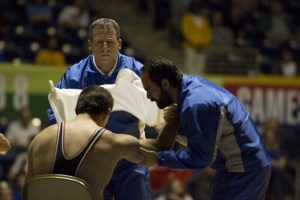
Foxcatcher looks closely at the tragic relationships between the Olympic-winning wrestlers, brothers Mark (Channing Tatum) and David Schultz (Mark Ruffalo) and multimillionaire sponsor John E. du Pont (Steve Carell).
From the first cut, through the finessing and trimming of the edit to screening length, the filmmakers used a deliberate pacing that held on the characters, searching to understand their thoughts, focusing on the visual clues that showed their internal struggles. “It was always about reading the film through the characters eyes,” shared Levy. “The emotional impact of du Pont’s looks increases exponentially the longer you stay on the shot. There is so much soul, especially in Channing’s performance. Your heart just sinks as you see everything he is going through.”
Deviations from the script due to improvisations on set were challenging for the editors. Miller shot a lot of coverage of the actual lines in the script, but he has also directed docs, so he would film the actors even when they went off script, trusting that the performances would be more honest and real.
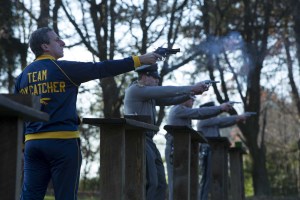 “Bennett was always searching for a higher truth or a more honest rendition of the scene,” said Levy. “The actors were so inhabiting the characters that Bennett would push to have them express the scene in a way that felt natural to them. It created incredible opportunities for these scenes to be approached in completely different ways.”
“Bennett was always searching for a higher truth or a more honest rendition of the scene,” said Levy. “The actors were so inhabiting the characters that Bennett would push to have them express the scene in a way that felt natural to them. It created incredible opportunities for these scenes to be approached in completely different ways.”
The editors generally followed the script in their first assembly, but there were many unused takes with different dialog. Other versions of the scene were then built around the new dialog to see how those lines serviced the characters and story using the different words and ideas developed through the on-set improv. It was a rigorous process, but it gave the editors an opportunity to create nuanced and diverse versions of the same scene.
Coming from a documentary background, O’Neill was experienced at “finding the gems” in the footage and creating a scene without a script. “It was like digging for gold,” he said. “The performances were so strong by all the actors that it was an embarrassment of riches. Working with people on such a high level was just great.”
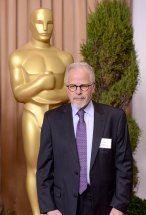
The original schedule for Foxcatcher was tight. The movie was set to release a year ago, but the company felt more work could be done to get it to reach its full potential. After a short hiatus, editor Jay Cassidy, came on to add his skills and fresh eyes to finishing the picture.
“Many things were well done and didn’t change” Cassidy said. “We built on that and attacked areas where it was not serving the larger story. It simply was a continuation of the editing process, which usually doesn’t happen in Hollywood. Usually once the train leaves the station, the movie’s gone. It is what it is. It was a tremendous blessing by Annapurna and Megan Ellison to give the film more time. The reaction to the film after we had spent a few more months justified taking the time.”
The film was not edited like a typical Hollywood movie, tightened for fast pacing and cut for entertainment value. It is an intense character study. According to Levy, the director’s major concern was for every note to ring true. “The most difficult thing was keeping the clarity and honesty of the moment.”
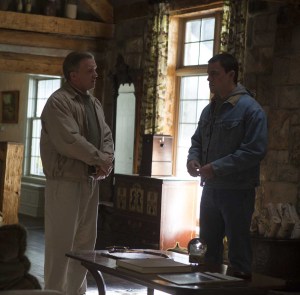 Things changed within the telling of the story according to Cassidy. He explained that in the last pass, “There was a simplification of certain elements of the story. We streamlined certain aspects that allowed the things that were already there to come to the front. It brought the conflict between Mark and du Pont right to the front a lot sooner in the film. You understood quicker than you had before what Mark’s situation was.”
Things changed within the telling of the story according to Cassidy. He explained that in the last pass, “There was a simplification of certain elements of the story. We streamlined certain aspects that allowed the things that were already there to come to the front. It brought the conflict between Mark and du Pont right to the front a lot sooner in the film. You understood quicker than you had before what Mark’s situation was.”
“The process was incredibly creative and collaborative,” Levy affirmed. “Bennett is talented and thoughtful.”
Cassidy added, “I have such respect for him [Miller]. He is concerned about every element of the film in a very specific way. It’s really great to work with someone with that intelligence and vision for what he wanted to do. He is the real deal in this town as far as being a filmmaker from the script stage right though the editing.”
O’Neill liked collaborating with the other editors, appreciating additional eyeballs on the product. He shared that all the editors had their hands on everything.
On Foxcatcher, the editors were searching for the truest essence of these characters as they traversed their emotional journey.





